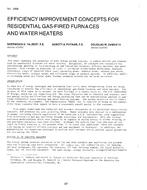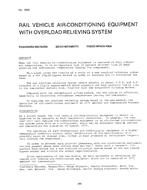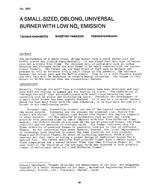-
-
Available Formats
- Options
- Availability
- Priced From ( in USD )
-
Available Formats
-
- Immediate download
- $16.00
- Add to Cart
Customers Who Bought This Also Bought
-

2608 -- Efficiency Improvement Concepts for Residential G...
Priced From $16.00 -

2605 -- Rail Vehicle Air-Conditioning Equipment with Over...
Priced From $16.00 -

2587 -- A Small-Sized, Oblong, Universal Burner with Low ...
Priced From $16.00 -

2607 -- Reducing Residential Energy Growth with More Effi...
Priced From $16.00
About This Item
Full Description
A significant trend in the household refrigerator market in Japan is the yearly increase in sales of larger-size refrigerators, which are produced to meet the market demand; this trend is apparently going to continue.
On the other hand, ever since the oil crisis of 1974, the appeal to save energy and resources has been widely and strongly proclaimed. Thus, the above situation creates the need for developing a low-power consuming, large-size household refrigerator.
Refrigerating systems can be classified into direct and indirect cooling systems. The former features high-efficiency but has been restricted to refrigerators with net volumes of not more than 230R.
In larger-sized refrigerators, the problem of balancing the refrigeration between the freezing compartment and the refrigerating compartment made it difficult to utilize direct cooling systems.
Efforts were therefore aimed at developing a new control system that would retain the power-saving feature of the direct cooling system while satisfying the conditions imposed by increased size and low-power consumption. A feature named "Clean pipe" system which further enhanced the overall effect was added, and a large-size directly-cooled refrigerator with low-power consumption and a considerable saving in materials used in its construction was successfully placed on the market in 1977. In terms of wattage, a 30 to 50% decrease was realized while overall weight was reduced by from 10 to 20%.





